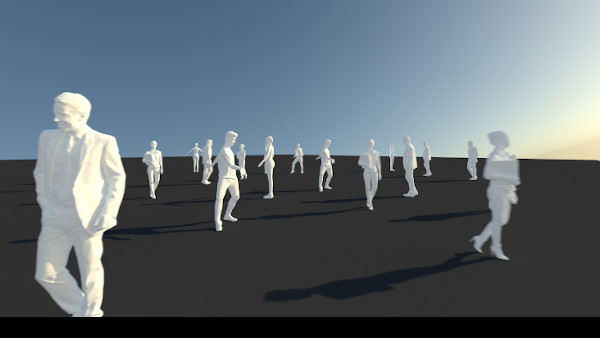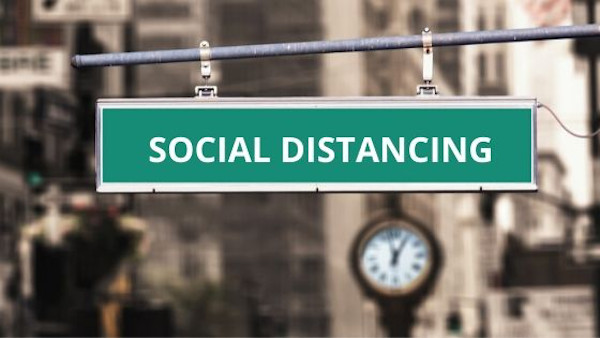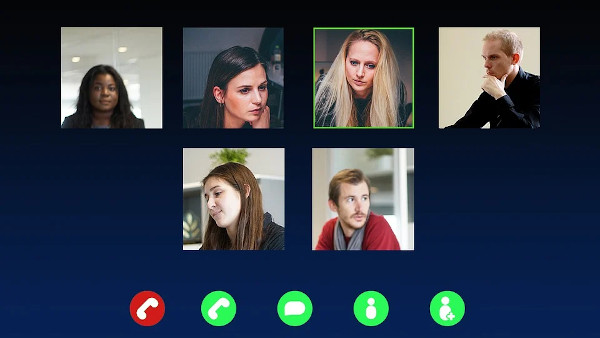The Coronavirus Pandemic and the Limits of Virtual Social Life

A quarter-century ago, the Spanish sociologist and interpreter of network society, Manuel Castells, famously argued that we had passed into in an age of “real virtuality.” “Reality itself,” he claimed, “is entirely captured, fully immersed in a virtual image setting, in a world of make-believe, in which appearances are not just on the screen through which experience is communicated, but they become the experience.”
In 1996, Castells’ proclamation seemed overblown. Amazon was in its infancy; Apple was receding in the shadow of Microsoft; and Facebook, Twitter, Google, and the Web 2.0 participatory media explosion were still years away. “Big Tech” had not yet become synonymous with the oligopoly of the information tech giants that we see today, and no one was talking about the political economy of platform capitalism or the perils of surveillance capitalism.
Castells’ claim that virtuality had “enclosed” and “absorbed” reality altogether therefore came off as hyperbole at best and Baudrillardian sensationalism at worst. The reality of the first half of the 1990s was characterized by a cascade of dramatic events – the end of the Cold War and dissolution of the Soviet Union, the Gulf War, the Rwandan and Bosnian genocides, the end of apartheid in South Africa, the Los Angeles riots – that a still-nascent internet and its budding capabilities were ill-equipped to contain. The territory at that time seemed far bigger (and more interesting) than the map.
Fast-forward to the present day and things look rather different. Cyberspace has come of age and is no longer an esoteric annex of mainstream culture. It has burgeoned and diversified into much more than the exclusive playground of technophiles, (mostly male) social misfits and escapists, and those seeking transgressive gratification beyond the strictures and prohibitions of embodied, face-to-face interaction. Granted, it still functions as all those things for some, and many of its subterranean recesses remain exclusive, but few would disagree that the World Wide Web is now central to all our lives in a global digital society.

It is as much where we live as are the buildings we occupy. E-commerce, cloud computing, live-streaming, image and video-sharing, social networking, videoconferencing, instant messaging, gaming, and online searching have worked their way into the warp and woof of our everyday habits and practices. Even our grandmothers now direct us to “Google it!” when in doubt. The internet, the social networks it has created, and the “always on” mobile technologies have interactively transformed how we work and play, how we experience, understand, and relate to the world, ourselves, and others. Our private and public lives have become profoundly “mediatized” in the brave new digital sphere. Worldwide, we spend an average of nearly seven hours a day online, half of that on mobile devices. So, are we closer to fulfilling Castells’ vision of real virtuality?
Perhaps. But has the internet really been tested for its adequacy in virtually reconstituting social life? After all, for all the depth and breadth of their cultural penetration, many of today’s popular social websites and apps are valued insofar as they facilitate or optimize future interaction in the flesh, be it personal or professional.
Online dating apps and services such as Tinder, Bumble, and Match are fueled by the promise of meeting potential romantic or sexual mates in person. LinkedIn provides its users with efficient professional networking and access to job possibilities that most often entail working in (real) buildings alongside (real) people. Facebook, Instagram, and Twitter are frequently used to plan and coordinate situated social events that bring people together physically.
In these examples, the virtual works to support or subserve the real; it doesn’t replace, nullify, or swallow it. The truth is that we’ve never been forced to confront the adequacy of virtual sociality on its own, because it has historically evolved to assist us in our ineluctably corporeal and often fraught transactions with others. However compelled and mesmerized we are by the multimedia digital self-projections we create and exchange with others, we are and will forever remain matter in motion, forced to deal for better or worse with the motion of those around us.

Nature, however, has a knack for putting our technologies to the tests that we are unable or unwilling to perform. The COVID-19 pandemic has placed more than a third of the world’s population under some form of mandatory lockdown. Nations around the globe have been forced to keep their citizens home and apart from each other. Social connection beyond the nuclear family – and at times within it – has been reduced to real virtuality. We collaborate and conference with co-workers through Zoom, Google Meet, and Microsoft Teams, rather than sit around a table at the office. We connect with friends through Skype, FaceTime, Duo, and Houseparty rather than over food or drinks. We catch up with neighbours through Nextdoor rather than block parties. Meanwhile, our kids fight their boredom and confinement on YouTube, Instagram, TikTok, and Twitch, when they’re not busy gaming or serving as reluctant canaries in the mine of online education. And we all binge on television series and films we would never deign to watch in normal times. It should come as no surprise that Netflix gained 16 million new subscribers around the world in the first quarter of 2020, which tripled its earnings from the same period last year.
And in case we fail to take the cue from the moment, we are constantly reminded that the virtual is where we should turn in this period of social contraction. Physical distancing, we are told, does not mean social isolation. Dr. Maria Van Kerkhove, technical lead on the World Health Organizations COVID-19 response team, said during a March 20th press conference that “distancing doesn't mean that socially we have to disconnect from our loved ones, from our family. Technology right now has advanced so greatly that we can keep connected in many ways without actually physically being in the same room or physically being in the same space with people….We're changing to say physical distancing [rather than social distancing], and that's on purpose because we want people to still remain connected.”
We’re also reminded that virtuality is not only how we should cope with the pandemic; it is a vital part of how we must combat it. An April 14th policy brief by the U.N.’s Department of Economic and Social Affairs, for example, highlighted the value of digital technologies in addressing the crisis. Governments were urged to “use digital communication channels to provide reliable information on global and national COVID-19 developments. E-participation platforms can represent useful tools to engage with vulnerable groups online and establish digital initiatives to collectively brainstorm for policy ideas to critical social and economic challenges.”
Big tech has never felt more self-important and righteous than at the moment we need them most. The Big Five – Amazon, Apple, Google, Facebook, and Microsoft – have together contributed $1.25 billion so far to meeting the challenges of the pandemic. And so they should. With a combined market capitalization of $4.7 trillion, a billion or two is pocket change for them. In fact, they’ve also been among the main beneficiaries of the crisis, as the world has become more dependent than ever on their dazzling panoply of digital tools and services.

Facebook has seen messaging on its platform increase by half and video-calling double in some markets. While this sharp increase in demand has created technical challenges of its own and is not immediately monetizable, it bodes well for the continuing dominance of the tech giant. Amazon’s stock hit an all-time high in April with a massive surge in orders. Apple’s services business (which includes Apple TV Plus, Apple Arcade, and Apple Music) is booming even while iPhone sales are down. Alphabet Inc., Google’s parent company, has benefited from a dramatic increase in the use of its services, more than offsetting the expected drop in ad revenues. Microsoft’s cloud business is booming as many of us are forced to work from home under lockdown, overshadowing the revenue loss in its PC unit.
The major players are showing a heightened sense of responsibility at this critical time, implementing strategies to inhibit the spread of disinfomation and misinformation about the origins of the virus and how best to prevent or treat the illness it causes. Consider this March 16th joint statement from Facebook, Google, LinkedIn, Microsoft, Reddit, Twitter, and YouTube: “We are working closely together on COVID-19 response efforts. We’re helping millions of people stay connected while also jointly combating fraud and misinformation about the virus, elevating authoritative content on our platforms, and sharing critical updates in coordination with government healthcare agencies around the world. We invite other companies to join us as we work to keep our communities healthy and safe.” That’s good news. We’ve come a long way since the tarnish of Cambridge Analytica! And few want to see another 5G cell tower go up in flames. But what else are we learning from this imposed test of radical virtual sociality?
According to a Gallup Panel survey conducted on April 6-12, 52 percent of Americans reported that social distancing has either harmed their mental health or will likely do so within a few months. Similarly, an Ipsos poll published on April 10th revealed that physical distancing has left over half of Canadians feeling lonely or isolated. The Canadian Mental Health Association warned on April 15th of an “echo pandemic of mental illness and mental health issues” as a result of COVID-19. Depression, anxiety, PTSD, substance abuse, domestic abuse, and suicides are expected to rise sharply. Information, support, guidance, and social connection through digital technology may buffer this to some extent, but those most vulnerable to the psychological costs of self-isolation – the elderly, physically or mentally compromised, poor, homeless -- are also those least likely to have access to or competence with digital technologies.
More importantly, however, we seem to have social needs that no amount of virtual connection can satisfy. In a number of survey studies published over the past decade, millennial and Gen Z digital natives often report the highest demographic rates of loneliness and isolation, despite also spending the most time online, especially on social media. This suggests that the social bonds formed or sustained through the internet, while potentially rewarding and even essential in the digital cultural lives of teens and young adults, are not enough on their own to sustain psychological health and well-being. Worse, too much screen time can displace the opportunity to forge “thicker” bonds by physically being together with others. While it may be true that those whom digital natives tend to connect with online these days are often also those they associate with in the flesh, the point remains that the former without the latter may not provide a satisfactory level of belonging, acceptance, intimacy, and support. Why might that be? Consider the following illustration from the front lines of our battle with COVID-19.

We’ve all read or heard the heartrending accounts of those who were unable to be with a quarantined family member dying from complications caused by the virus. Prohibited from sitting vigil with their loved ones in a hospital or long-term nursing home or medical facility, these families had to settle for connecting live through the glowing screens of digital devices. The blurry, halting images and wafery voices of video chat are all they had to give and receive in the final hours. Gone was the intimacy of physical closeness and contact that makes both dying and saying the last goodbye just bearable. It is little surprise that some opted instead to stand outside the windows of the ward during their family member’s final hours, preferring the solace of spatial nearness and what Hannah Arendt once called “stubborn thereness” to simulated presence. Either way, death in this context becomes refracted “through a glass, darkly” and is all the more painful for it.
What is missing from these virtual farewells that makes them seem so unfair and distressing? Those who study digital media and communications talk a lot about the reduced “social presence” that characterizes virtual connections. That certainly applies here. But what does the reduction consist of in this case? What would have made the difference? Two channels of social intercourse seem especially important: touch and the opportunity to read the eyes of the other.
The intimacy of consensual touch often serves as a human balm in trying situations. To hold the hand of a dying patient, kiss their cheek, stroke their head, or embrace them communicates the primordial message, “You are not completely alone in your terror and pain. I am here with you.” It is the original and most powerful form of social bonding. The digitally connected families mentioned above were denied this saving grace. The innovators of real virtuality are not unaware of this gap. As I write this, tech companies are busy working on the next generation of “haptic devices,” skin-integrated interfaces for virtual and augmented reality environments that will provide the sensations of touching and being touched by remote others. For now, however, we must accept the fact that touch is something essential to our health and humanity that mass-market virtuality does not provide.
Through the pandemic, we have become sensitized to the bodies of others as potential sources of infection. Anyone could be a “silent spreader,” we are told, infected with the insidious COVID-19, yet either presymptomatic or persistently asymptomatic as they unknowingly pass it on to others. Solid estimates of how much of global transmission is attributable to silent spread are not yet available, but some have suggested it could be as high as 30 percent.
Accordingly, we give passersby a wide berth on the sidewalk and avoid their glances to underscore the fact that it is prudential and not personal. The eyes of others, in fact, have long been both the blessing and the bane of virtuality. Many feel liberated by text-based digital communication because they don’t have to deal with the direct gaze of their interlocutor or audience when expressing themselves. Just ask any executioner – or internet troll. It’s easier to hurt, upset, or denounce others when you don’t have to look them in the eye. The empowerment of disinhibition can be exhilarating and even democratizing when justified dissent or accusation is delivered with visual impunity. It can also be antisocial, inviting narcissism, meanness, incivility, and an unwillingness to recognize the needs of others or rationally engage with what they have to say. A few hours spent on today’s Twitter provides ample evidence. Video chat is scarcely better as a medium. Sure, we can see the bodies of others set against the furnishings of their room, office or, increasingly, a faux backdrop. But the eyes are too small, indistinct, and ethereally remote to carry significant moral weight.

And morality, after all, is the main issue here. Looking for any length of time into the eyes of another forces us to consider that person’s needs, desires, emotions, and intentions vis-à-vis our own. The gaze of the other is in this sense a “moral summons.” For Jean-Paul Sartre, this was not such a good thing. Sartre described meeting another’s eyes as a source of “uneasiness” and “decentralization” as we struggle to comprehend and accept the other’s independent subjectivity alongside our own. Doing so reduces our freedom, Sartre argued. We are no longer “master of the situation” and our world is “stolen” from us. Given its present limitations, real virtuality -- with or without live video -- carries neither the promise of Levinasian ethical communion nor the threat of Sartrian loss of freedom. There is simply not enough gaze to get worked up about.
Without the touch and the transfixing eyes of others to humanize us during the pandemic, we are finally confronting the limits of the network. Adapting to a world of imposed real virtuality, many of those who live alone – who together account for 28 percent of all households in both the United States and Canada -- have been able to curtail the distress of isolation and loneliness through the use of digital information and communication technologies. For that we should all be grateful, as Big Tech will no doubt remind us in their marketing campaigns for years to come.
Even so, the spike in mental distress that we’re now experiencing, one that will almost certainly persist well beyond the pandemic itself, is hard to ignore. Of course, we do not know just how much of the surge is because of social contraction per se, which in the present crisis is conflated with health anxiety, the sickness or death of those who matter to us, unemployment and underemployment, domestic and occupational disruption, increased family burdens, and economic uncertainty. Nonetheless, we can reasonably assume that the reduction in full-blooded interpersonal contact – the virtualization of social life -- is making most of us feel less well than we would otherwise.
In the same year that Castells announced the advent of real virtuality, poet and cyberlibertarian John Perry Barlow rhapsodized about its liberating immateriality. “Ours,” he wrote of cyberspace, “is a world that is both everywhere and nowhere, but it is not where bodies live.” Directly addressing the governments of the world, he proclaimed, “We must declare our virtual selves immune to your sovereignty, even as we continue to consent to your rule over our bodies. We will spread ourselves across the planet so that no one can arrest our thoughts.” Looking back now, a little charity is in order. Sure, in the wake of 21st-century troll farms, fake news and political disinformation campaigns, cyberbullying, catfishing, deepfakes, bots, big data and behavioural tracking, Edward Snowden’s NSA files, and Cambridge Analytica, it’s perhaps all too easy to smirk at Barlow’s fin de millénaire enthusiasm.
But is that fair? He certainly wasn’t alone in his zeal and conviction back in the 1990s. An awful lot has happened on the road to cyberutopia since to dampen our collective faith. If we handle things responsibly, we’ll look back at the COVID-19 pandemic in the rearview mirror soon enough. We’ll have learned a lot about ourselves and our institutions -- both strengths and weaknesses. Here’s an important lesson we can add to the list: Virtual sociality is not enough to make us happy. We need each other -- really, not virtually. And while our “posthuman” future remains an open question, no amount of advanced digital technology and computer coding can ever change what’s written into the social DNA of our species.
Author Bio:
Romin W. Tafarodi earned his Ph.D. in social psychology from the University of Texas at Austin in 1994. He has since taught at Cardiff University, the University of Tokyo, and the University of Toronto, where he is currently Associate Professor of Psychology. He has contributed research articles and book chapters in the areas of self, identity, and culture; and taught undergraduate and graduate courses ranging from statistics to philosophy and media studies. He is a strong proponent of multidisciplinary and interdisciplinary scholarship in an age of increasing academic specialization.
For Highbrow Magazine
Image Sources:
--Maximillian Schoenherr (Creative Commons)
--Testing Today (Creative Commons)
--Chad Davis, (Wikimedia, Creative Commons)
--Folsom Natural (Creative Commons)
--Mohsen Atayi (Wikimedia.org, Creative Commons)
--Jagritparajuli (Pixabay, Creative Commons)































































































































































































































































































































